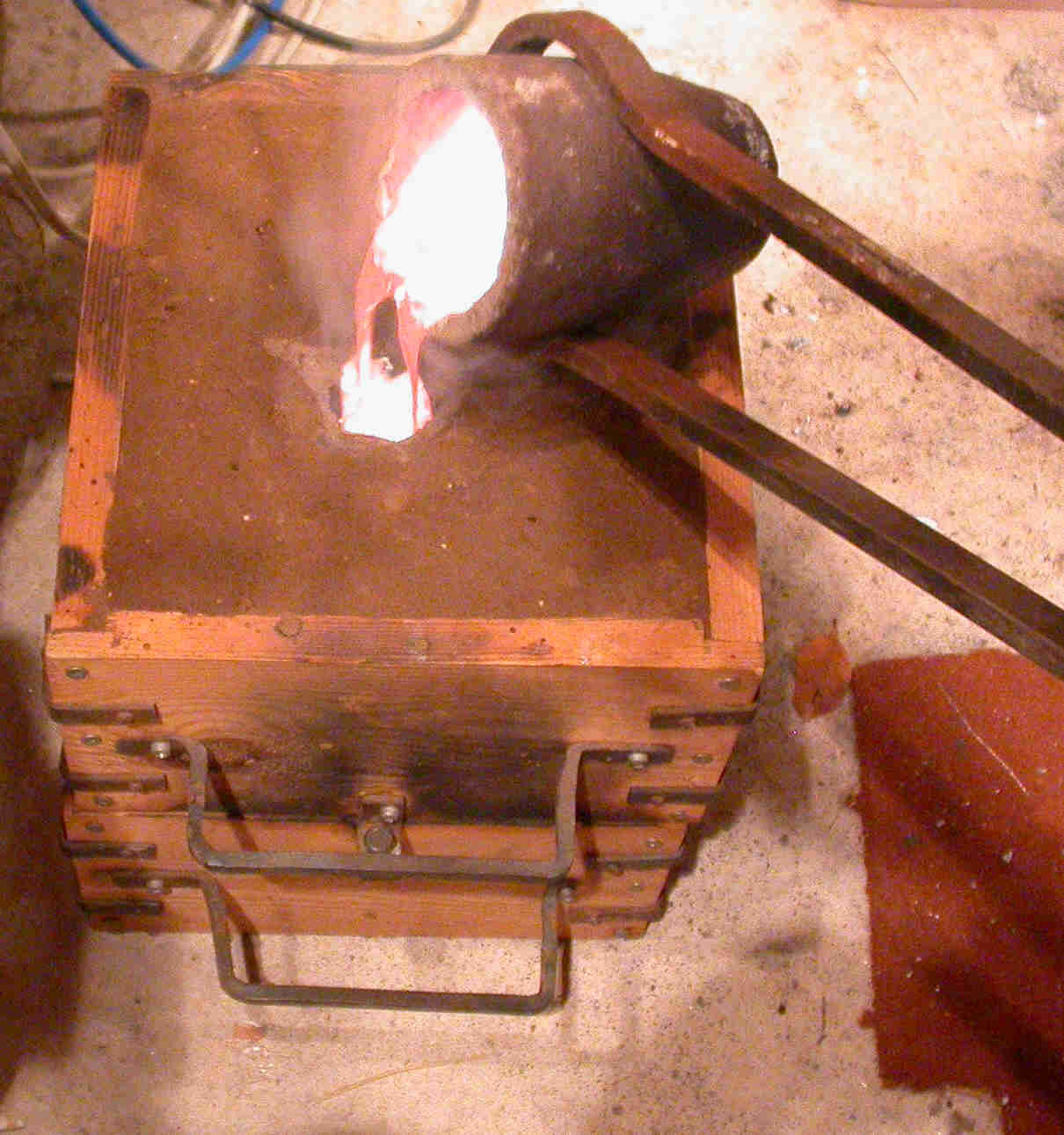
ALL MATERIAL COPYRIGHT KEVIN SCOTT 2011. LINKS TO THIS SITE ARE WELCOME BUT DO NOT COPY MATERIAL FROM THIS SITE TO ANY OTHER WEBPAGE.
If you find this site useful, please support it by making a donation of $1 to help maintain and develop it. Click on the PAYPAL DONATE button to do this safely. But there is no obligation - please avail yourself of the information and facilities of the site at no charge.
Depending on the size and nature of the casting, the metal will need to be heated to about 100 -200 degrees C above its melting point. The table shows the temperatures for different metals and alloys:


| METAL; | MP deg C; | Casting temp deg C |
| Aluminium Alloy | 600 -660 | 800 |
| Brass/Bronze | 930 | 1100 |
| Iron | 1536 | 1700 |
There is a variety of methods to heat the metal. The most expensive and the cleanest is to use an electrically- or gas-heated
furnace, aluminium and bronze can be successfully melted on a blacksmith's forge, Iron needs a furnace which can be fired with gas or
solid fuel, but it does need a tuyère (a heated air blast). Particular care needs to be taken to provide ventilation when casting in brass. This is
because Zinc is volatile at the casting temperatures and tends to be lost from the alloy. Its toxicity is significant and for brass casting an
efficient fume extraction is essential. The fusion process is assisted by the addition to the melt of proprietary fluxes. These encourage fusion and
and a mobile melt, reduce oxides and inhibit the formation of dross.
For brass, bronze and copper, the addition of SLAX 20 slag coagulant inhibits the inclusion of non-metallic residues in the casting. It
is a coarse yellow powder which when added to the crucible before pouring (about 20gm per kilo) makes a crust which traps debris and dross and
prevents it being carried over with the metal. Cuprit 1 or Cuprex 1 are members of a range of melt-cleaning additives in tablet form which can be added to red
bronze or brass melts prior to pouring. They are available from Foseco.
For aluminium and its alloys, Nitral C19 can be added to degas the alloy and prevent occlusions in the castings. Coverall II is a proprietary
flux which inhibits oxidation of aluminium alloys and can be added to the melt before pouring.